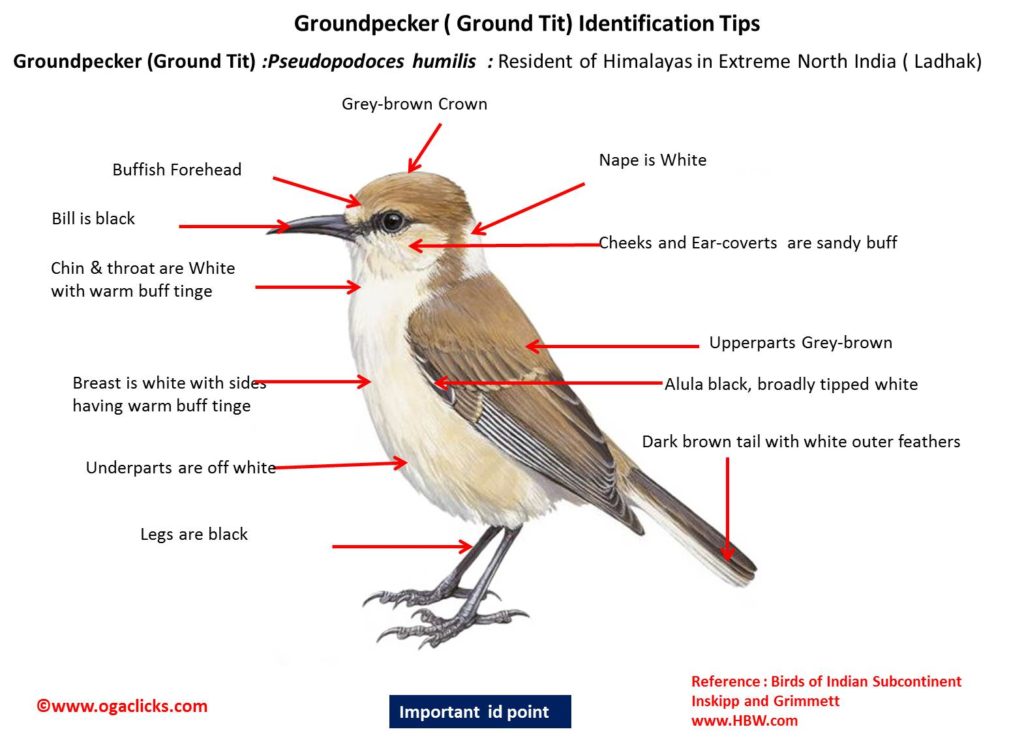Groundpecker

Groundpecker Pseudopodoces humilis
Etymology:
- Pseudopodoces : Greek word pseudos – false; Podoces – Quick footed
- Humilis : Latin word “on the ground”
Vernacular Names: Tibetan: Day-day
Distribution in India: Resident of North Himalayas (Tsokar & Tsomoriri in Ladhak good places to see them)
Description: Size of 18-19 cm .It is large, upright, long-feathered with long, curved bill. Forehead is pale buff, crown and upperparts grey-brown, tinged sandy, slightly paler on side of crown and rump; broad whitish-buff half-collar on lower nape; central tail feathers dark brown, upper wing slightly browner than upperparts, alula black, broadly tipped white; primary coverts and flight-feathers dark brown, broadly fringed pale buffish-brown; lores black, cheek and ear-coverts sandy buff; throat and underparts off-white, warm buff tinge on throat to breast side; iris dark brown; bill and legs black. Both the sexes are alike.
Habitat:
It is found at 4200–5500 m in Ladhak .Treeless steppes, including grassy plains and rocky hills with scattered stunted bushes above tree-line, often in yak pastures and close to human settlements, including monasteries.
Food Habits: It eats small invertebrates and larvae. Usually solitary or in pairs. Spends most time on ground, occasionally perches on rocks or walls; usual gait is long bounding hops. Probes in soft earth, turf, yak dung and decaying animal corpses.
Breeding Habits: They breed in April-July. Nest is made of moss, dry plant fibers and animal hair. It is placed in deep hole in soft ground, bank or stone wall. Pairs excavate burrows and burrows are also excavated after breeding to be used for roosting in winter. Also known to use Pica holes. Clutch is 4–9 eggs, incubation period 14–16 days; nestling period 18–20 days. Well-developed young beg food from adults for some time after fledging.